Click on the images below for larger pictures. Photographs and caption by Robert Freidus. [You may use these image without prior permission for any scholarly or educational purpose as long as you (1) credit the photographer and (2) link your document to this URL in a web document or cite it in a print one.]

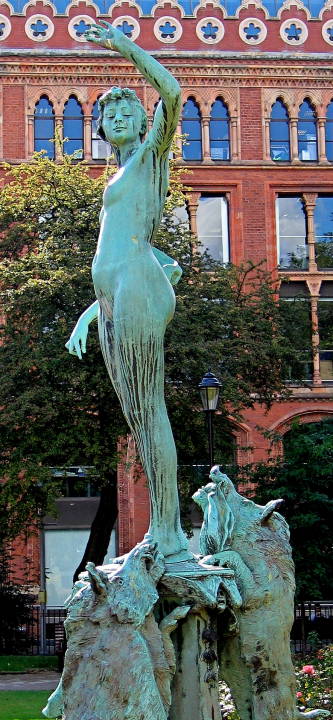
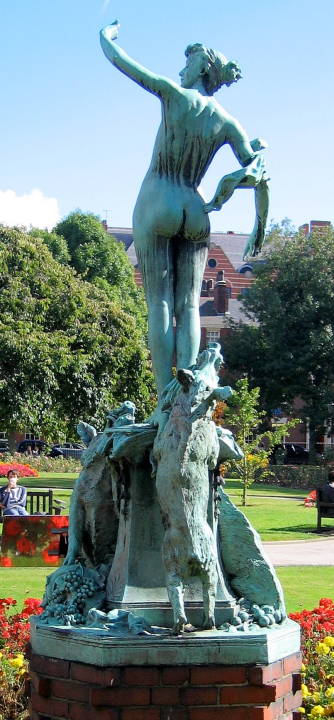
Three views of Circe by Alfred Drury, RA. Park Square, Leeds. Bronze.
Circe (or Kirkê, as Robert Fitzgerald calls her, staying close to the original Greek) appears in the tenth book of The Odyssey when Odysseus and his men land upon her isle. Remaining with the ship, he sends them to explore, and only the cautious Eurýlokhos, now panicked, returns, telling how the witch turned his companions into pigs after she invited them to join her at table:
On thrones she seated them, and lounging chairs,
while she prepared a meal of cheese and barley
and amber honey mixed with Pramnian wine,
adding her own vile pinch, to make them lose
desire or thought of our dear father land.
Scarce had they drunk when she flew after them
with her long stick and shut them in a pigsty —
bodies, voices, heads and bristles, all
swinish now, though minds were still unchanged.
So, squealing, in they went. And Kirkê tossed them
acorns, mast, and cornel berries — fodder
for hogs who rut and slumber on the earth. [p. 184]
Homer presents the men as innocent victims of the devious witch — indeed, Hermes warns Odysseus that even he, the cunning hero, would succumb to her drugs without the divine messenger's antidote — but later ages imposed a moral upon the incident, some allegorizing it as a lesson about how even natural appetites for earthly pleasures turn human beings into pigs, whereas others, like J . W. Waterhouse, emphasize instead woman as witchy seducer.
Drury certainly does his best to make his nearly nude Circe — she does have a tiny scrap of cloth draped over her right upper arm — “loveliest of all immortals” (p. 191), and the expression on her face (see the photograph below left) depicts a quietly superior smile, almost a smirk. Victorian sculptors frequently create nude figures, but few are as enticing as this one.
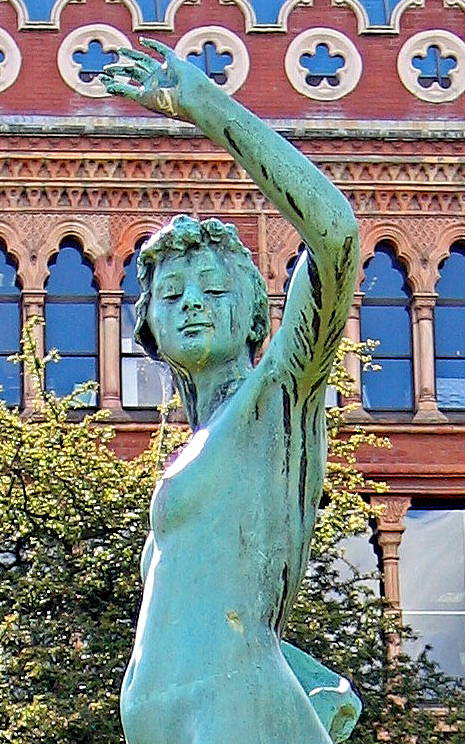
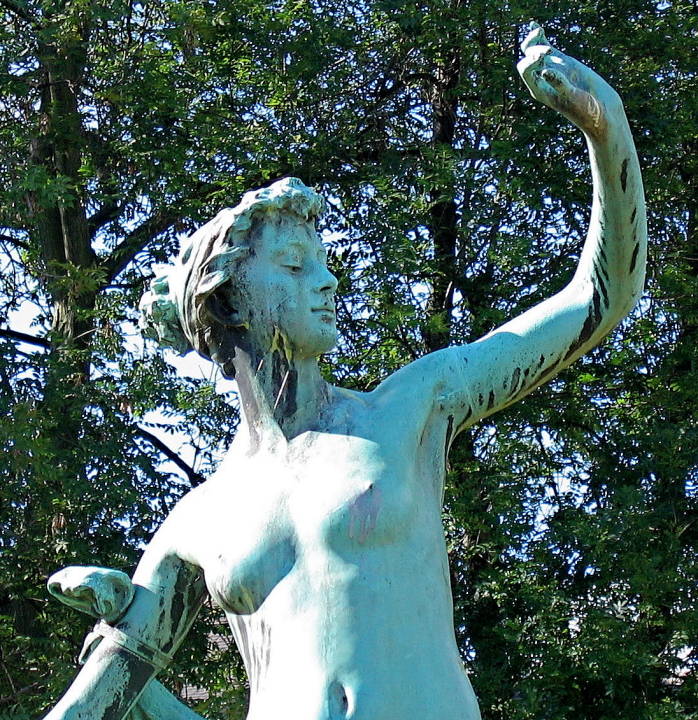
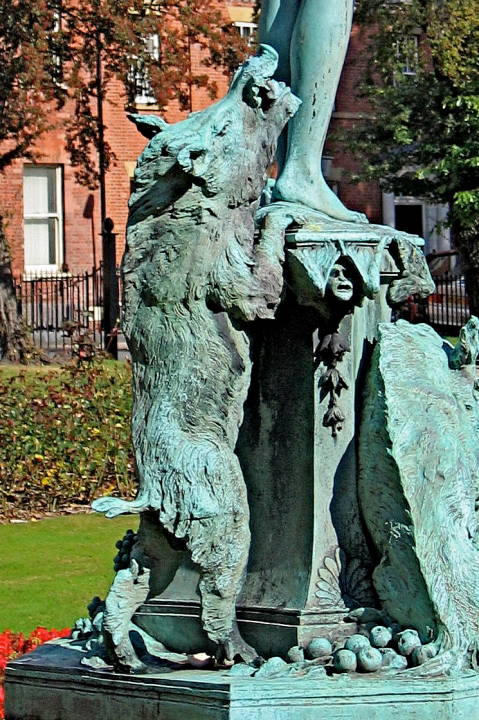
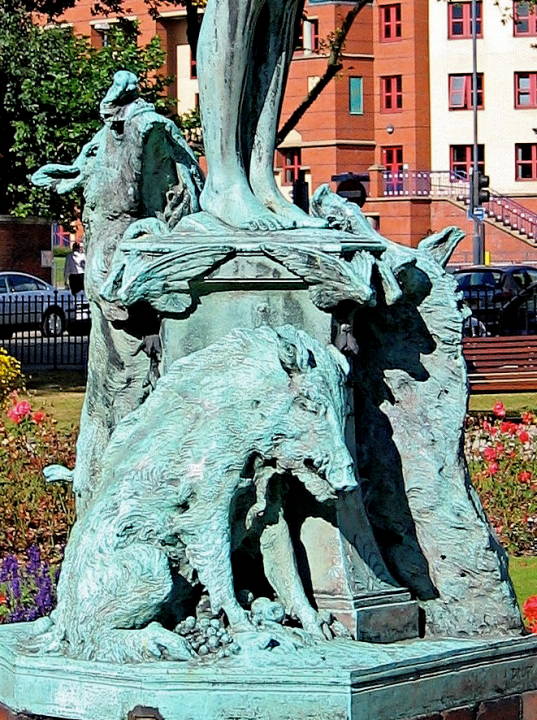
Left to right: (a and b) two details showing Circe's expression. (c and d) The men whom the sourceress turned into hogs.
Drury, who has created a wonderfully seductive Circe, succeeds equally well in representing the cowed, now desperate animals who want to regain their human form. (Her greatest touch of cruelty comes in the fact that she transforms only their bodies and leaves their minds intact.)
Bibliography
Beattie, Susan. The New Sculpture. New Haven: Yale University Press, 1983. Pages 108-10.
Homer. The Odyssey. Trans. Robert Fitzgerald. Garden City, New York: Doubleday, 1961.
Last modified 9 May 2011